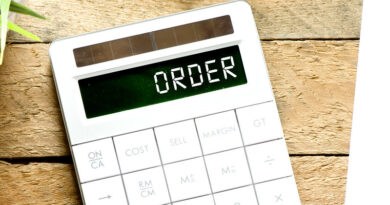What is an SAP CO Module? How does the SAP Controlling Module Work?
So far, I have talked about the SAP FI Module and written various tutorials on the SAP FI processes. In SAP FICO, there is another important module known as SAP CO. But, what is an SAP CO Module? It is also known as the SAP Controlling Module.
Both SAP FI (Financial Accounting) and CO (Controlling) are independent modules in SAP Finance. Moreover, the Controlling Module is used for Planning, Reporting, and Monitoring of business operations. It provides you with information that can be used for making management decisions.
Earlier in the SAP ECC system, the data related to FI and CO were stored in separate tables. And, the reconciliation between Financial Accounting and Controlling was manual. With the introduction of SAP S/4 HANA, the data flow between both the FI and CO modules happens in real-time and SAP stores the data in the universal ledger table ACDOCA.
Unlike the SAP FI module, the system does not generate any accounting documents in the SAP Controlling Module. In other words, the CO documents do not have any impact on financial accounting. Thus, you create the GL Accounts as Cost Elements or Revenue elements. Hence, this way the SAP system allows you to reconcile the values from Financial Accounting and Controlling in SAP FICO.
Table of Contents
SAP CO Module Process Flow

An SAP Controlling Module consists of various sub-modules. Each sub-module has its own purpose and functionality. The most common SAP CO submodules are:
- Cost Element Accounting
- Cost Center Accounting
- Profit Center Accounting
- Internal Orders
- Product Costing
- Activity-Based Costing
- Profitability Analysis (COPA)
Cost Element Accounting
A Cost Element accounting allows you to track the costs and revenues that occur in an organization. This SAP CO submodule makes use of the GL accounts. While creating a GL account in SAP, you also assign a Cost Element Category to it.
Basically, a cost element category can be an Expense account or a Revenue Account. All of the Profit & Loss GL accounts are tagged to either an expense or a revenue element.
For example, you assign an Expense Cost element category to all the GL accounts that you use to book costs in the system like Cost of Goods Sold, Consumption, etc. Similarly, you assign a Revenue category to all of the GL accounts that record revenues like Sales accounts, Miscellaneous Income, etc.
Cost Center Accounting

You can use cost center accounting to analyze the overhead costs that incur within an organization. Almost all the organizations use this sub-module to track the overhead costs. Within this sub-module, you create a cost center master data.
You create a cost center master data to track costs as per organization departments. In other words, it is an organizational unit in an SAP CO module that represents a clearly delimited location where costs occur.
You assign a Cost Center to a company code in the master data. Also, you can group Cost Centers to provide a summary of cost information by creating a cost center hierarchy. You define Cost Center Hierarchies before creating a cost center master data.
Also, when you post a journal entry in SAP to a cost element with an ‘Expense‘ category, you assign a cost center to it to book all of your costs at the cost center level.
Profit Center Accounting

You use the Profit Center Accounting to evaluate the Profit and Loss within an organization. Like Cost Center Accounting, almost all the organizations use this sub-module to track the profits and losses. You make use of a Profit Center master data in Profit Center Accounting.
A Profit Center is an organizational unit in an SAP CO Module that lets you determine profits and losses using their period accounting or the Cost-of-Sales approach.
You assign a Profit Center to a company code in the master data. Also, you can group profit centers to provide a summary of profit and loss by creating a profit center hierarchy. You define Profit Center Hierarchies before creating a cost center master data.
Also, if New GL Accounting is active and document splitting is in place by profit centers, then it becomes mandatory to post to a profit center in every accounting document to generate correct GL balances report. You basically assign a profit center while posting an accounting document for Balance Sheet and Revenue GL Accounts.
Since a Profit Center is also assigned in the cost center master data, so whenever a posting to an expense account with a cost center takes place, the expense gets booked at both the cost center and the profit center level.
Internal Orders

An Internal order is a cost object in an SAP CO Module that is used to monitor the costs for a specific project for a specific time period. They are not the same as cost centers in a way that internal orders are not permanent. Also, you can use an internal order to monitor costs for production activities.
Internal orders allow you to budget the costs as well. You can assign a budget to internal order and thus can limit the spending within that budget.
Just like you use the cost center to record transactions for expense accounts, you can use internal orders to capture costs for the expense GL accounts.
SAP Product Costing (CO-PC)

Product Costing allows you to calculate the costs that occur during the manufacture of a product. As a result, you use this sub-module to plan costs and calculate the material prices. You can estimate the cost of goods manufactured and the Cost of Goods Sold (COGS) for a material by using this functionality.
To run the Product Costing, you need the material master data, Bill of Materials (BOM), Work Centers, and Routing. In fact, you create a bill of material for each internally produced Semi-Finished or Finished Goods Material. Also, it contains the list of raw materials and the quantities required to produce a semi-finished or finished goods material.
A Work Center is a work area or a machine where you perform the production work. You assign a cost center in the work center master data. Similarly, a routing helps in identifying the process to manufacture a material.
Activity Based Costing
Activity-Based Costing assigns the manufacturing overhead costs to the products or services. Firstly, it assigns the cost to the activities that are part of the overhead costs. Secondly, it assigns those activities to the products. This type of costing is mainly used in the manufacturing industry as it gives a true picture of the cost estimate.
Also, it helps in identifying the products that are not profitable and service processes that are not effective. It segregates the Fixed Costs, Variable Costs, and Overhead Costs.
Profitability Analysis (COPA)

A profitability analysis (COPA) sub-module in an SAP Controlling Module allows you to analyze the profitability of an organization based on different market segments. Therefore, the transaction data from the Financial Accounting (FI), Sales & Distribution (SD), Materials Management (MM), and Production Planning (PP) flows to the COPA to generate the profitability reports.
For example, whenever you create a goods issue or a customer invoice for a sales order, the values of COGS and Sales flow to COPA to analyze the profitability of a customer or a Product.
There are two types of COPA: Costing-Based and Account-Based. On the basis of the requirements of an organization, you can use any type of COPA. Also, an organization can use both types of COPA, if required.
In COPA, you can use standard reports to analyze the profitability of any market segment like Material, Material Groups, Sales Area, Customer Groups, etc.
SAP Controlling Module FAQ
What is an SAP CO Module?
You use an SAP CO Module for Planning, Reporting, and Monitoring of business operations. It provides you with information that can be used for making management decisions.
How can I learn SAP CO Module?
You can follow the SAP CO documentation on the SAP website or try searching on YouTube. Also, you can follow this blog as I will be posting more tutorials on the SAP controlling niche.
What is the difference between SAP FI and CO?
SAP FI a financial accounting module that records financial data. On the other hand, an SAP CO module does not post any financial accounting. You can use it for planning, reporting, and monitoring of business operations.
I hope you liked this article. Please do share it with others and stay tuned for more! Please also go through the other tutorials on this blog.



